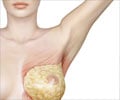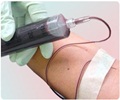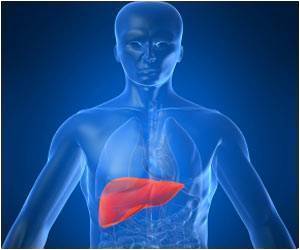
‘The implantable scaffold device attracts the body’s immune cells, and the immune cells draw in the cancer cells. This then limits the immune cells from spreading to the lung, liver and brain.’
Tweet it Now
The study, done in mice, expands on earlier research from this team showing that the implantable scaffold device effectively captures metastatic cancer cells. Here, the researchers improve upon their device and show that surgery prior to the first signs of metastatic cancer improved survival.“Currently, early signs of metastasis can be difficult to detect. Imaging may be done once a patient experiences symptoms, but that implies the burden of disease may already be substantial. Improved detection methods are needed to identify metastasis at a point when targeted treatments can have a significant beneficial impact on slowing disease progression,” says study author Jacqueline S. Jeruss, M.D., Ph.D., associate professor of surgery and biomedical engineering and director of the Breast Care Center at the University of Michigan Comprehensive Cancer Center.
The scaffold is made of FDA-approved material commonly used in sutures and wound dressings. It’s biodegradable and can last up to two years within a patient. The researchers envision it would be implanted under the skin, monitored with non-invasive imaging and removed upon signs of cancer cell colonization, at which point treatment could be administered.
The scaffold is designed to mimic the environment in other organs before cancer cells migrate there. The scaffold attracts the body’s immune cells, and the immune cells draw in the cancer cells. This then limits the immune cells from heading to the lung, liver or brain, where breast cancer commonly spreads.
“Typically, immune cells initially colonize a metastatic site and then pave the way for cancer cells to spread to that organ. Our results suggest that bringing immune cells into the scaffold limits the ability of those immune cells to prepare the metastatic sites for the cancer cells. Having more immune cells in the scaffold, attracts more cancer cells to this engineered environment,” Shea says.
Advertisement
At 15 days after tumor initiation, they found 64 percent fewer cancer cells in the liver and 75 percent fewer cancer cells in the brains of mice with scaffolds compared to mice without scaffolds. This suggests that the presence of the scaffold slows the progress of metastatic disease.
Advertisement
In addition, researchers hope that by removing the scaffold and examining the cancer cells within it, they can use precision medicine techniques to target the treatment most likely to have an impact.
This system is early detection and treatment, not a cure, the researchers emphasize. The scaffold won’t prevent metastatic disease or reverse disease progression for patients with established metastatic cancer.
The team will develop a clinical trial protocol using the scaffold to monitor for metastasis in patients treated for early-stage breast cancer. In time, the researchers hope it could also be used to monitor for breast cancer in people who are at high risk due to genetic susceptibility. They are also testing the device in other types of cancer.
The study is published in Cancer Research.
Source-Newswise















